While I feel like the definition should be pretty straightforward, the reality is that there’s a lot of inconsistency between hotels as to what constitutes a suite, and what constitutes a junior suite. I wanted to address that topic in this post, and am curious how y’all feel about this.
In this post:
Hotels take a lot of liberties with room descriptions
Honestly, hotels don’t do a very good job with naming their room categories. Or at a minimum, there’s not much consistency as to what you can expect from a particular category of room. For guest rooms, what’s the difference between a classic, superior, deluxe, and executive room? For suites, what’s the difference between an executive suite and junior suite?
The reality is that different hotels take different approaches in naming rooms, so you really can’t rely on how a room is named to figure out what you’re going to get. An executive room at one hotel may be more spacious than a junior suite at another hotel. Meanwhile a junior suite at one hotel might be more spacious than an executive suite at another hotel.
That’s why I always rely on other details when deciding what kind of a room to book. I look at pictures online, and I also look at the square footage (though keep in mind that some hotels include outdoor space in square footage, while others don’t).
What constitutes a hotel suite?
If you ask me, the key feature of a “proper” hotel suite (perhaps referred to as an executive suite, or deluxe suite, or superior suite, or whatever) should be that it has a separate living area and sleeping area.
In other words, the room has a bedroom with a door or some other substantial partition that separates it from the living room. For example, below is a suite I’ve been assigned at the Hyatt Regency Zurich Airport.
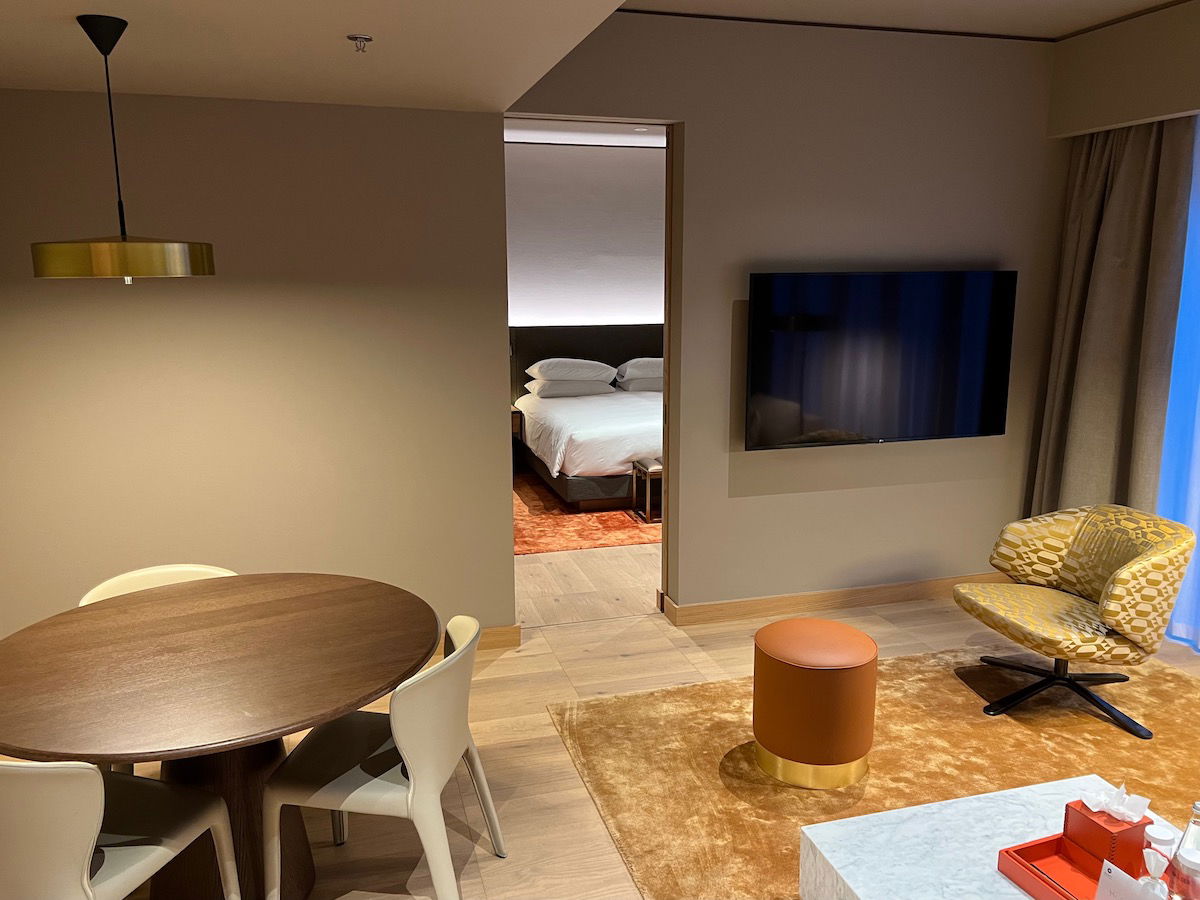
The Merriam-Webster definition of “suite” supports that, as it’s described as “a group of rooms occupied as a unit.” Now, just because the dictionary defines a suite that way doesn’t mean that hotels have the same interpretation. I mean, so many airlines refer to their business class seats as suites, even though they don’t consist of groups of rooms.
Anyway, if hotels want to be honest and manage expectations, I think that’s what they should offer when they promise a suite. That’s not to say that all hotels do that, though, and I’ve stayed at plenty of hotels that don’t have a separate bedroom and living room, yet still call an accommodation a suite.
How does a junior suite differ from a full suite?
As far as I’m concerned, the key feature of a junior suite compared to a less premium room should be that it has a proper sitting area, but perhaps it doesn’t offer a totally separate living room and bedroom.
In terms of seating, I think a junior suite should have seating for a few people, typically at least with a couch or multiple chairs. For example, below is a junior suite I’ve been assigned at the Park Hyatt Milan…
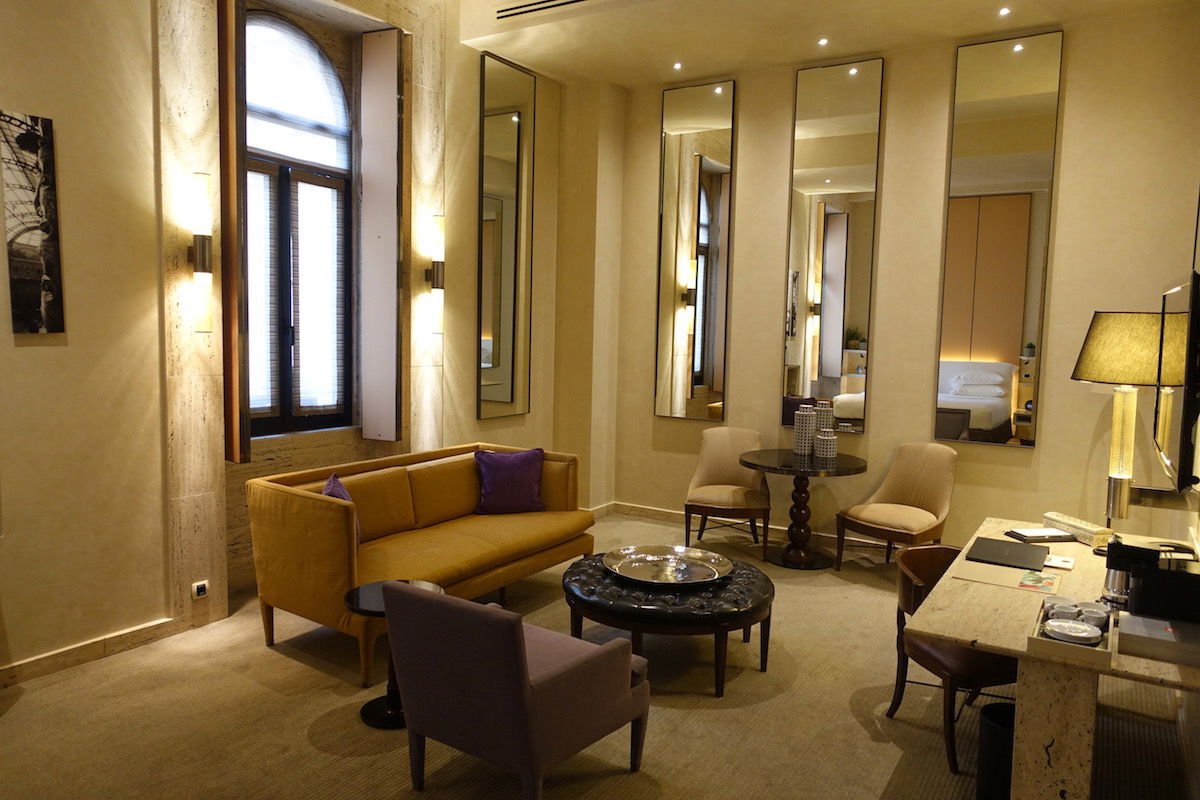
…and a junior suite I’ve been assigned at Marriott’s The Ben in West Palm Beach.
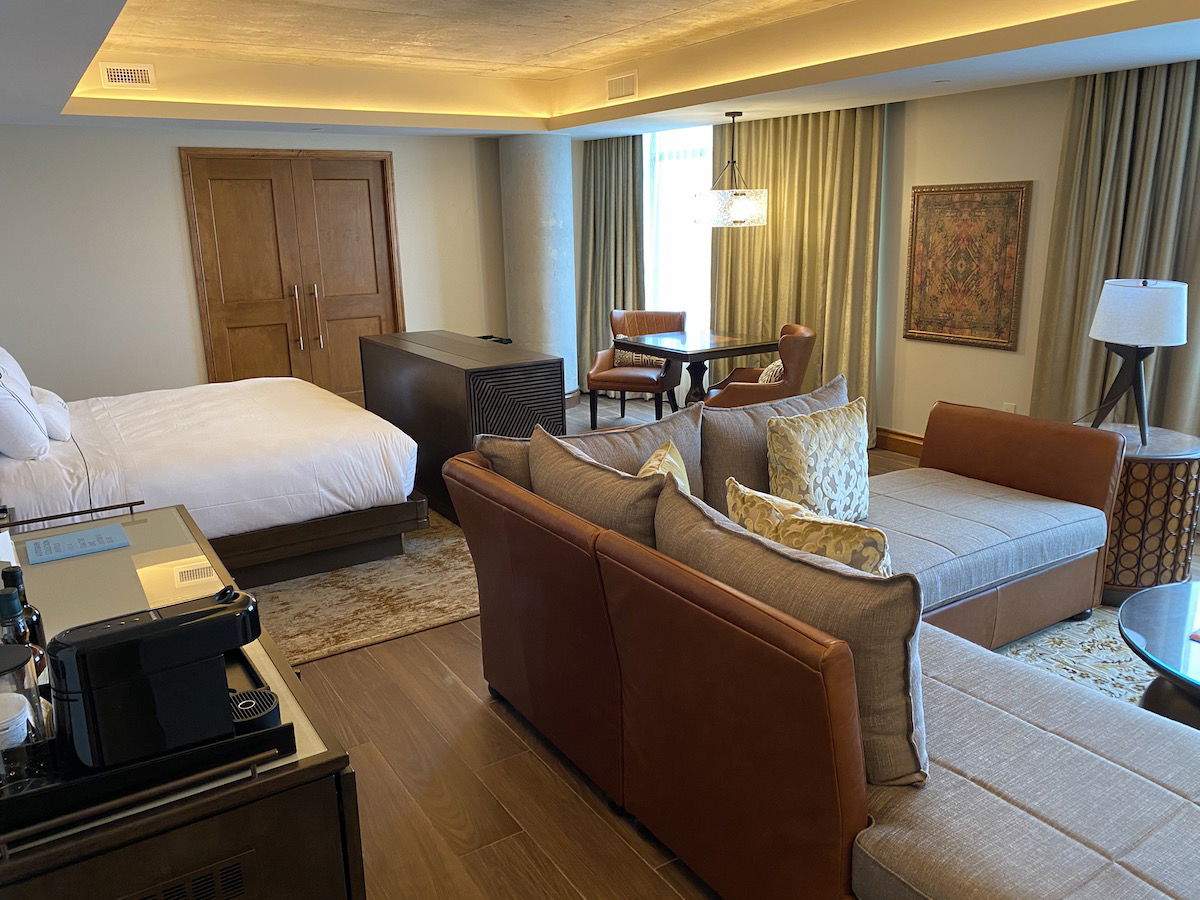
Now, while that’s how I think it should be, that’s not to say that this is how it always is. For example, at Hyatt’s Hotel Martinez Cannes, junior suites just have a chair with an ottoman and half a daybed. Admittedly standard rooms are even smaller here, but calling this any version of a suite seems like a stretch.
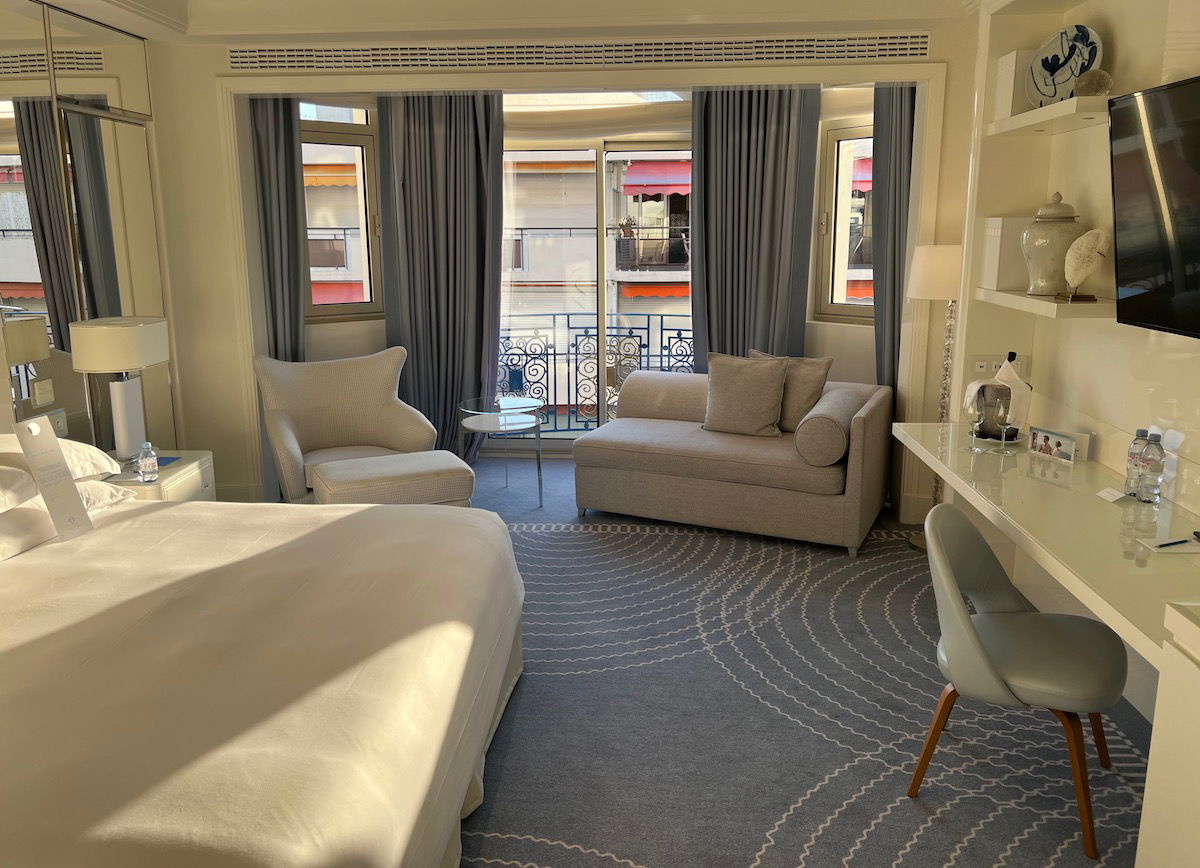
Meanwhile at the Park Hyatt Auckland, I was assigned a king bed rooftop room, which isn’t even in any way defined as a suite, yet it was in line with what I’d expect from a junior suite, with a proper couch area and dining table.
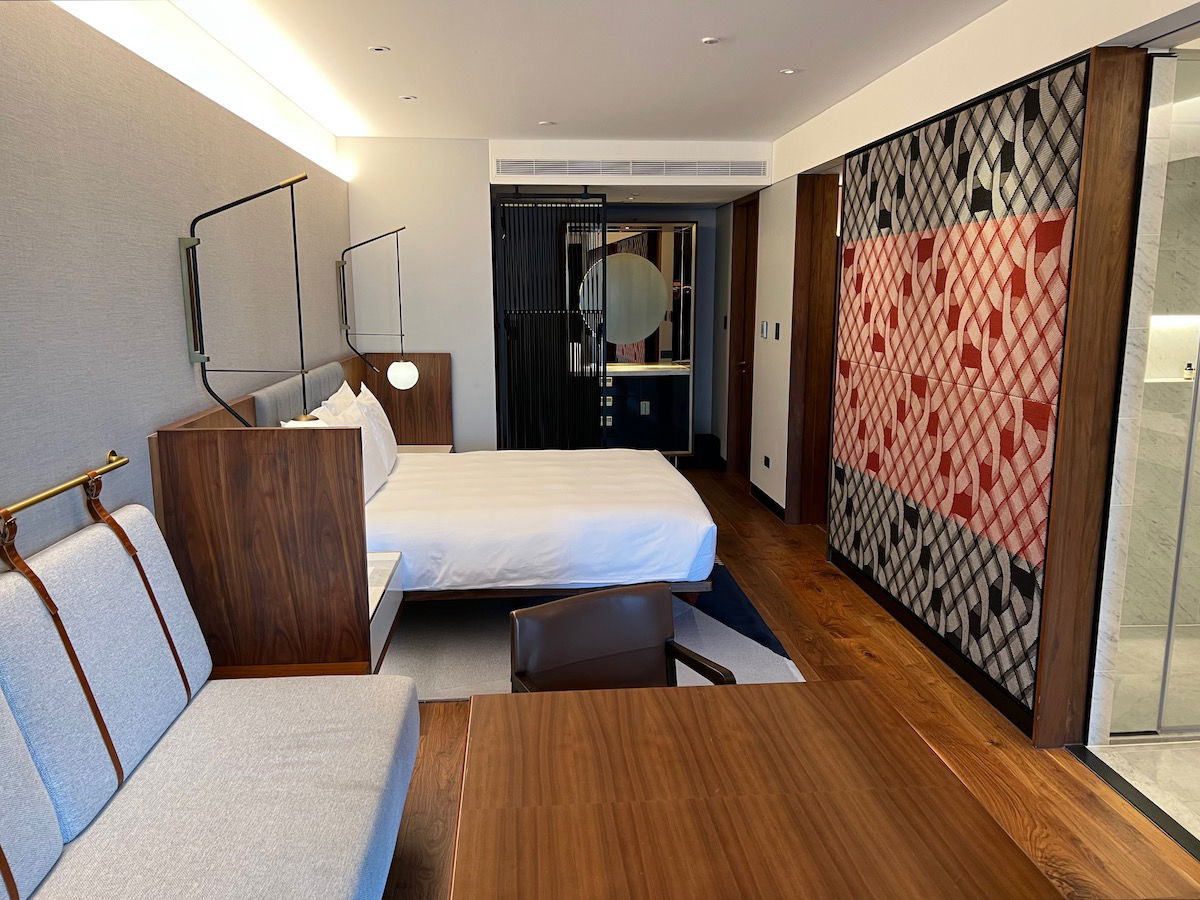
Bottom line
There’s not much consistency across the hotel industry when it comes to how hotels define what constitutes a suite. Per the actual definition of the word, a suite should consist of multiple rooms. If you ask me, a full suite should have a separate bedroom and living room, which can be fully separated from one another.
A junior suite is a bit trickier. In my experience there’s not much consistency there, though I expect a junior suite to still have some sort of a substantial sitting area, but maybe not in a separate room.
What’s your take on this — what do you expect from a suite, and what do you expect from a junior suite?
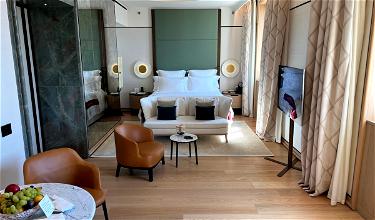

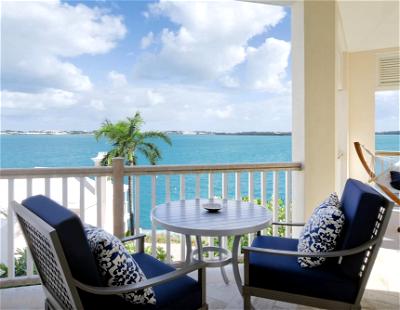
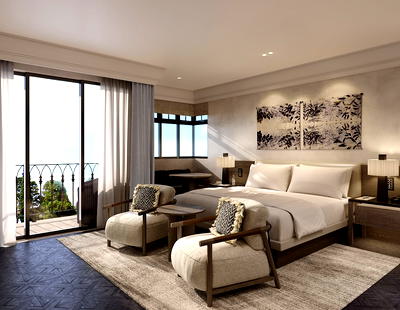

I find a junior suite usually being much better than a full suite in that I can enjoy more space while a full suite if not much bigger would be all walls. I also won't need that separate living room unless I have guests over but why would I if I am travelling as a couple or a family?
We find Europe more difficult with room descriptions. We agree with you Ben on what you have said about suites and jr suites.
And in Europe there tend to be more different level managers to deal with before the GM. Ie; front desk, asst front office, front office, guest services...
I'm a huge fan of junior suites - I just appreciate having a separate full sitting area. I don't necessarily need a whole separate bedroom, oftentimes its a bit overkill for my needs if I'm being honest - but if I was staying for longer than 4-5 days and spending a ton of time in the room I may feel differently. So i don't care if a hotel calls what I would consider a junior...
I'm a huge fan of junior suites - I just appreciate having a separate full sitting area. I don't necessarily need a whole separate bedroom, oftentimes its a bit overkill for my needs if I'm being honest - but if I was staying for longer than 4-5 days and spending a ton of time in the room I may feel differently. So i don't care if a hotel calls what I would consider a junior suite a suite, as long as the rates are reflective of what the product actually is (not hundreds more to have a couch).
Junior Suites = STFU we've upgraded you to a suite.
It is all relative. I stayed in a paid junior at a chain in Zurich and it was like a room in a doll's house. Later on I stayed in a studio at a Residence Inn and it was double the size with double the furnishings. You should realize that most Residence Inn rooms are suites as compared to the lowly studio.
Is a Hyatt Place an all-junior-suite hotel?
Haha yes. It's like an airline premium economy, but the unbundled 'basic' fare class.
The terms are used so loosely, I just ignore them and read the descriptions.
The worst offenders are "all suite" hotels which are 90% junior suites.